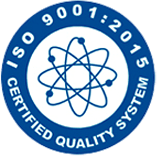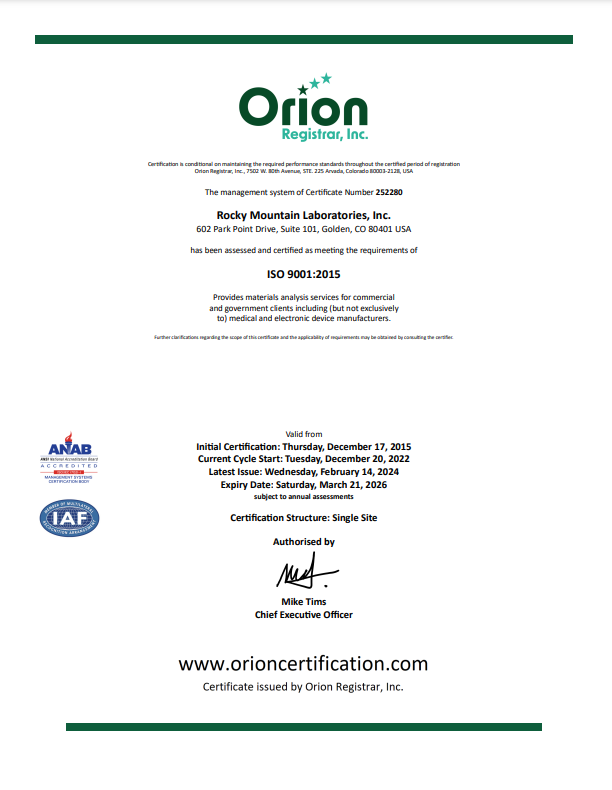In the pursuit of sustainable energy solutions, fuel cells stand out as a promising technology for clean power generation. Understanding the surface chemistry and composition of fuel cell materials is essential for optimizing efficiency, durability, and performance. X-ray Photoelectron Spectroscopy (XPS) has emerged as a vital analytical tool in fuel cell research, offering unparalleled insights into material properties, catalyst behavior, and interfacial phenomena.
Continue reading “XPS Analysis for Fuel Cells”Blog
XPS Analysis for Fuel Cells
SEM Analysis for Nanotechnology
In the realm of nanotechnology, where materials and devices are engineered at the atomic and molecular scale, precise characterization and imaging capabilities are essential for understanding structure-property relationships and advancing technological innovations. Scanning Electron Microscopy (SEM) has emerged as a cornerstone analytical technique in nanotechnology research, offering unparalleled resolution and depth of analysis
Continue reading “SEM Analysis for Nanotechnology”FTIR Analysis for Cosmetics
In the ever-evolving world of cosmetics, ensuring product quality, safety, and efficacy is essential to meet the demands of consumers seeking effective and safe beauty solutions. Fourier Transform Infrared Spectroscopy (FTIR) has emerged as a valuable analytical tool for cosmetic manufacturers, offering insights into the composition, purity, and stability of cosmetic formulations.
Continue reading “FTIR Analysis for Cosmetics”AES Analysis for Catalyst Surface Analysis
Catalysts play a pivotal role in accelerating chemical reactions and driving industrial processes, from energy production to environmental remediation. Understanding the surface composition and reactivity of catalysts is essential for optimizing their performance and designing more efficient and sustainable processes. Auger Electron Spectroscopy (AES) has emerged as a powerful analytical technique for studying catalyst surfaces, offering unparalleled insights into elemental composition, chemical bonding, and surface reactions.
Continue reading “AES Analysis for Catalyst Surface Analysis”XPS Analysis for Battery Materials
In the quest for cleaner and more efficient energy storage solutions, battery technology stands at the forefront of innovation. Understanding the composition and surface chemistry of battery materials is essential for optimizing performance, enhancing stability, and extending lifespan. X-ray Photoelectron Spectroscopy (XPS) has emerged as a powerful analytical technique for characterizing battery materials, offering invaluable insights into their elemental composition, chemical bonding, and electronic structure.
Continue reading “XPS Analysis for Battery Materials”SEM Analysis for Automotive Industry
In the fast-paced world of automotive engineering, precision, durability, and performance are paramount. Scanning Electron Microscopy (SEM) has emerged as a cornerstone analytical technique, offering automotive manufacturers unprecedented insights into material properties, component integrity, and failure analysis.
Continue reading “SEM Analysis for Automotive Industry”FTIR Analysis for Construction Materials
In the construction industry, ensuring the quality and durability of materials is paramount. From concrete to asphalt to polymers, the composition and properties of construction materials play a crucial role in the integrity and longevity of infrastructure projects. Fourier Transform Infrared Spectroscopy (FTIR) has emerged as a powerful analytical tool for characterizing construction materials, offering valuable insights into their chemical composition and structural properties.
Continue reading “FTIR Analysis for Construction Materials”AES Analysis for Thin Film
Thin films, with applications ranging from electronics to optics, demand meticulous characterization to ensure optimal performance. At Rocky Mountain Laboratories, we employ Auger Electron Spectroscopy (AES) as a sophisticated analytical tool for unveiling the intricate details of thin films.
Continue reading “AES Analysis for Thin Film”XPS Analysis for Energy Industry
In the dynamic landscape of the energy industry, the development and optimization of advanced materials are critical for enhancing efficiency and sustainability. Rocky Mountain Laboratories employs X-ray Photoelectron Spectroscopy (XPS) as a powerful tool for the in-depth characterization of materials relevant to the energy sector.
Continue reading “XPS Analysis for Energy Industry”SEM Analysis for Particle Analysis
In the realm of particle analysis, precision and detailed characterization are paramount. At Rocky Mountain Laboratories, we leverage the power of Scanning Electron Microscopy (SEM) to unravel the intricate details of particles, providing valuable insights for a wide range of industries.
Continue reading “SEM Analysis for Particle Analysis”


